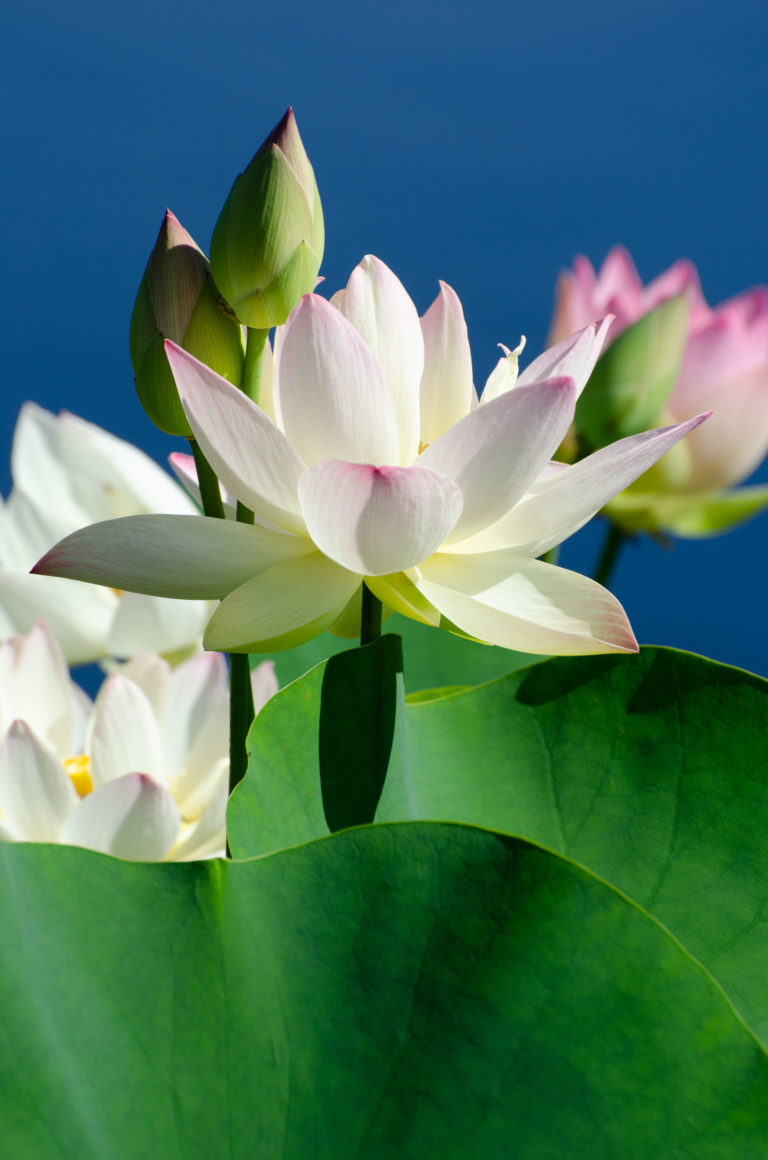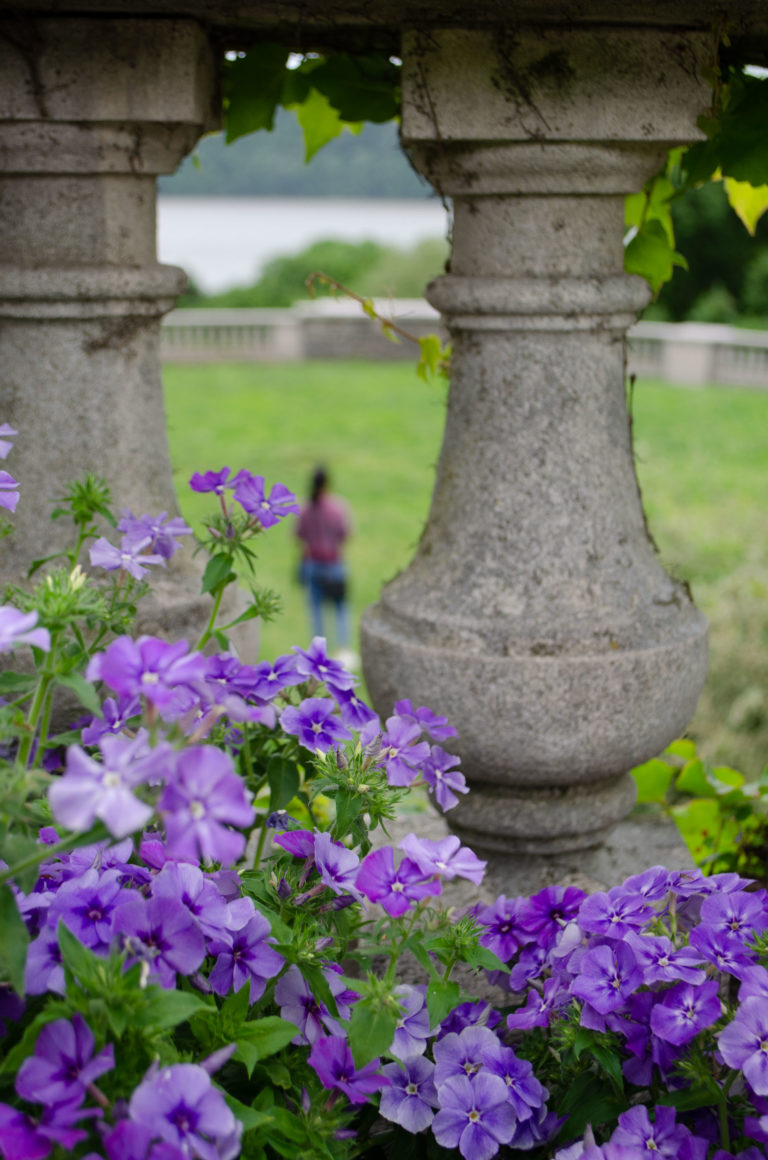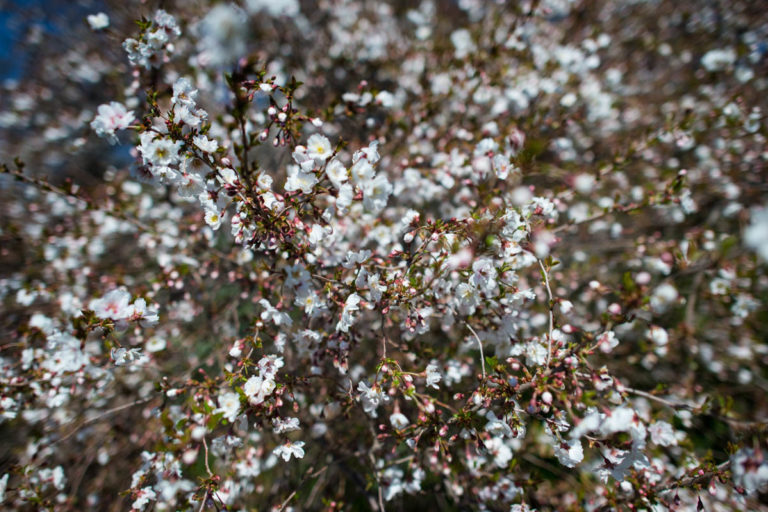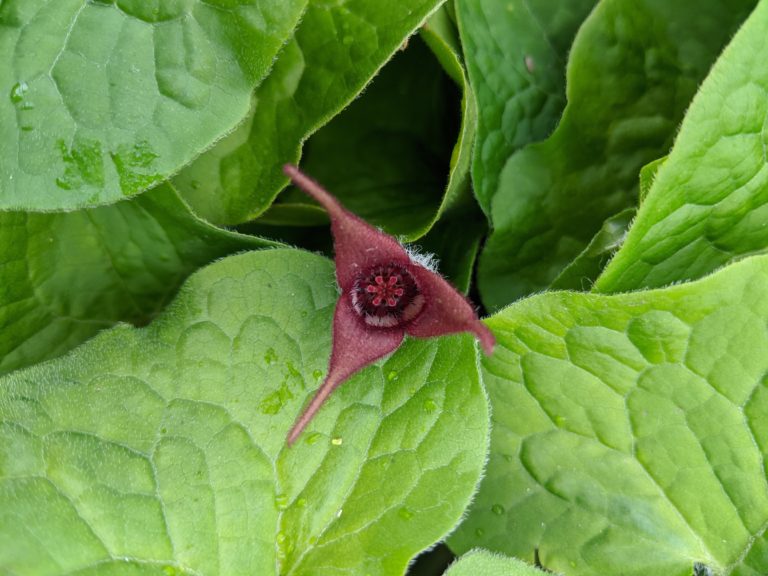
Asarum canadense (Wild Ginger)
April 23, 2020One could be forgiven for missing the blooms of this native woodland plant. Small, reddish-brown in color, and resting on the ground, they are not entirely obvious but, for all that, they are worth a closer look.
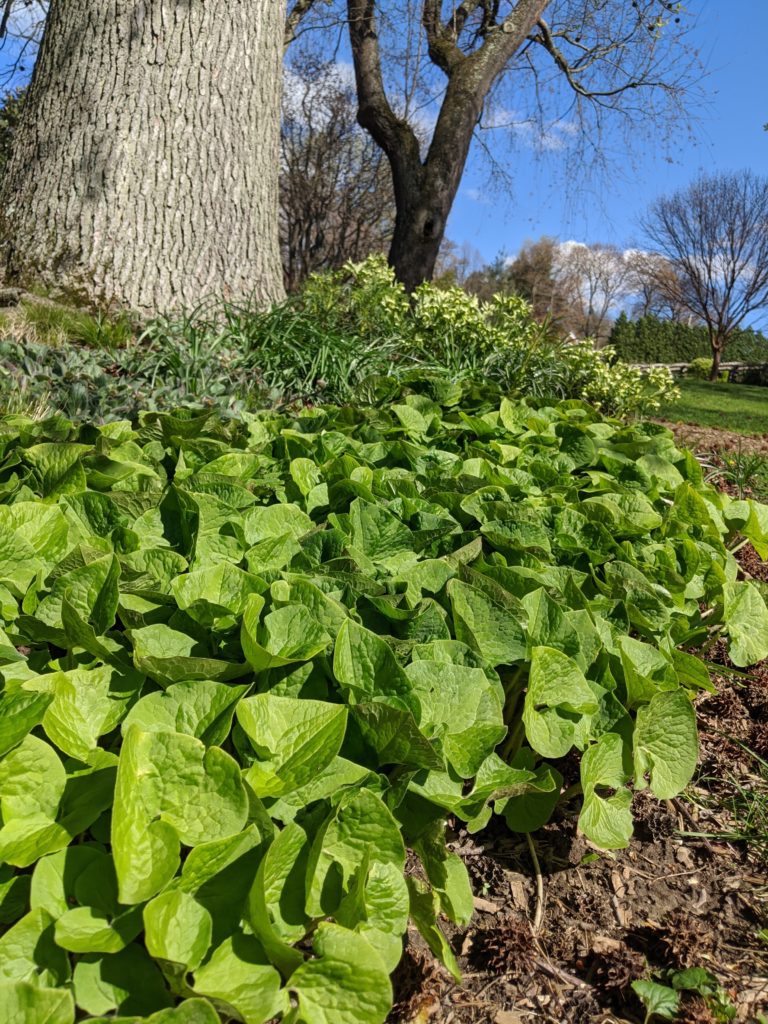
The flowers, despite their diminutive size, are quite beautiful and have an almost tropical appearance. Their color and location make them attractive to tiny flies, which, as they emerge from the soil at this time of year, seem to assist with pollination.
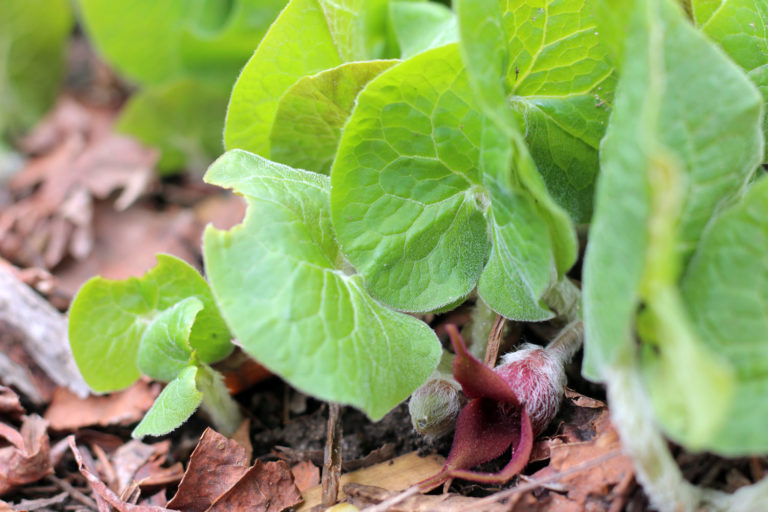
A further trick demonstrated by this plant is that when its seeds are ripe, they have a nutritious coating. Ants collect these seeds and carry them off to their nests, where they eat off the coating and discard the contents—usually in an ideal location for the plant to grow.
Asarum canadense is called wild ginger because the root was once collected to be used as a ginger substitute, but it does contain some toxic compounds and is no longer used as a flavoring. True ginger (Zingiber officinale) is a tropical plant and is completely unrelated.
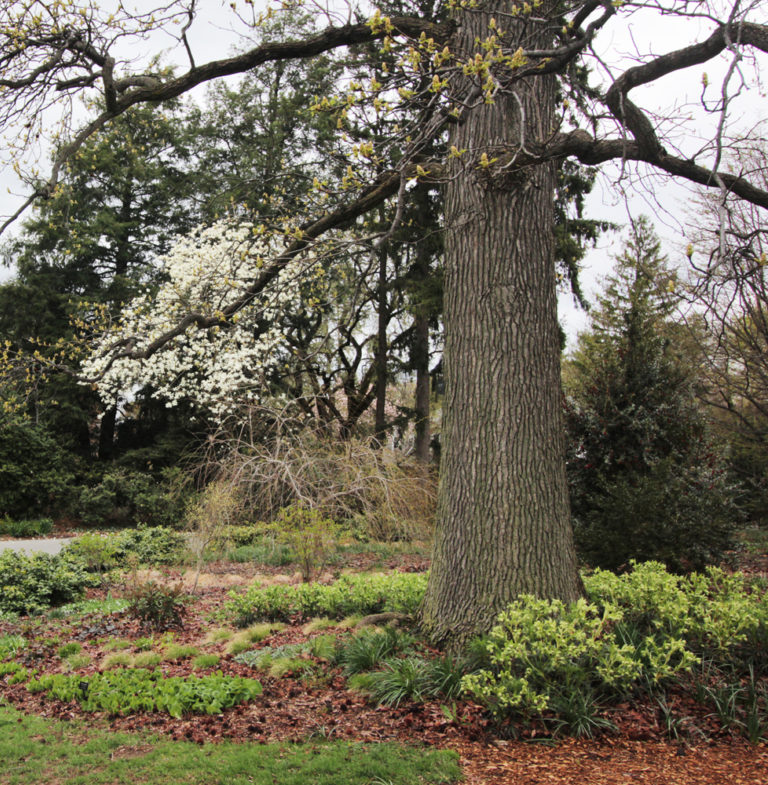
Wild ginger makes an attractive ground cover in a shady spot in the garden. Its flowers and distinctive, freshly-unfurled foliage can be seen this week in the Shade Border, close to Wave Hill House.
A close reader of Wave Hill’s blog may recognize this as the work of Wave Hill’s recently retired Ruth Rea Howell Senior Horticultural Interpreter Charles Day. This post dates back almost exactly a year to April 18, 2019. Charlie’s elegant, informative writing has a perennial quality, and we are delighted to be able to showcase his knowledge this spring with some new photos.
